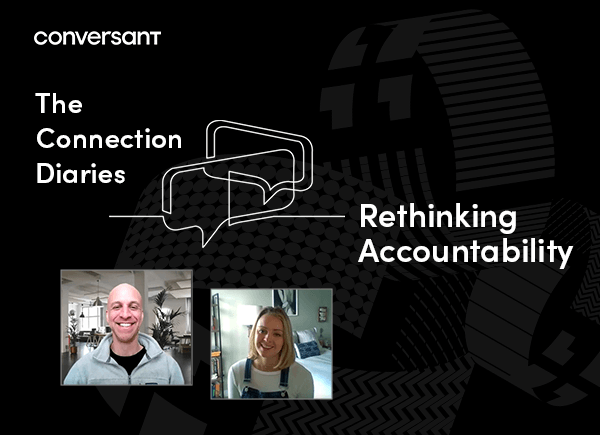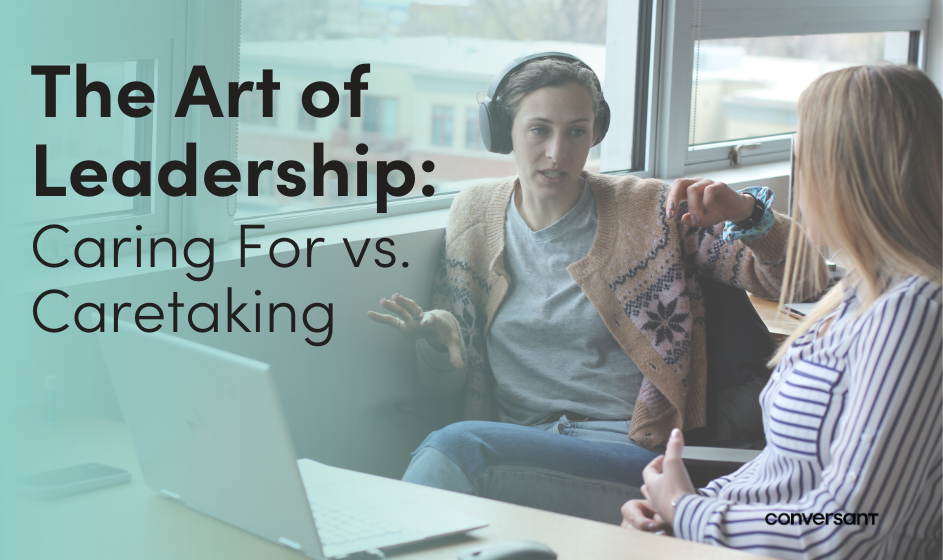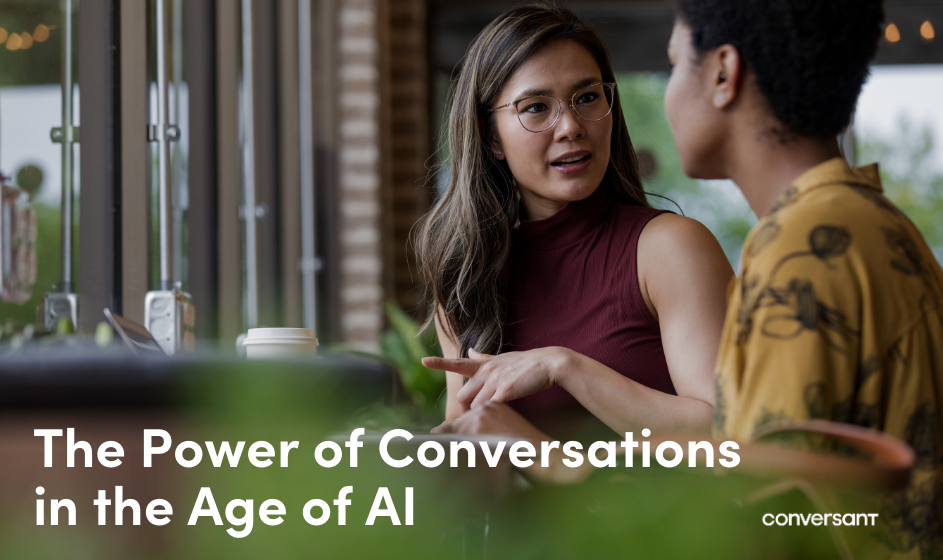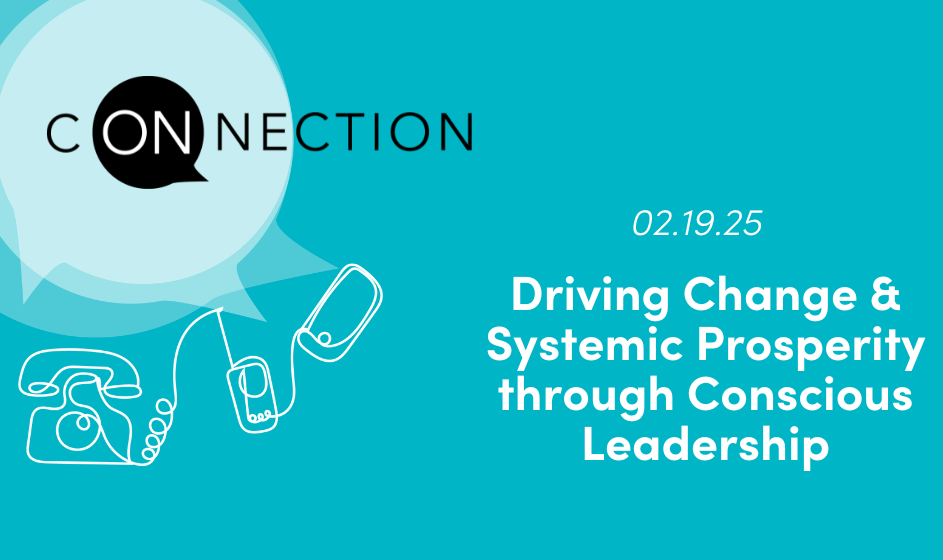We often hear from clients that they want to increase accountability in their organizations in order to ensure high performance. We’ve recently been wondering, what does accountability really mean? In what contexts? Is it always what a challenge needs to guarantee success?
Emma Rose and Kell share what they’ve learned from reflecting on the meaning and purpose of “accountability” in organizations today, including how methods for ensuring employee accountability have evolved along with business environments over the past 100 years or so. From the etymology of the word to what it means for AI technology in the workplace, the conversation offers food for thought relevant to any leader considering how to set their teams and organizations up for sustainable success.
You can find a full transcript of this video below. Explore all past episodes of The Connection Diaries here or on our YouTube channel, and don’t forget to connect with us on LinkedIn.
Full Transcript
Emma Rose: Hello and welcome to another edition of The Connection Diaries. I’m joined by my lovely, intelligent, insightful colleague Kell Delaney, and this month we’re talking about accountability which is thrown around a lot these days. Kell, what are you thinking about in the world of accountability? Why do you think this matters right now?
Kell: Well I guess for me, you know Emma Rose and I had this conversation a while ago and it sort of evolved. We hear “accountability” from our clients all the time: we need more accountability, we want more accountability, we need to build in more accountability. And it made us wonder, what does that even mean? What are people thinking when they say “we need more accountability”? I know Emma Rose did a little research, I did a little research, on what’s the history of this term, what does it actually mean and where does it come from and I guess what we’d like to talk through a little bit today are some ideas around how we might redefine accountability.
The more we’ve discussed it the more I’m seeing there are different circumstances that require different forms of accountability and that, to be honest, when most people are saying we need more accountability they’re applying a form of accountability that doesn’t match the needs, the purposes, the outcomes they’re trying to meet or accomplish so I wonder, Emma Rose, maybe you want to just share a little bit about your research into what accountability came out of, what the history and the context is?
Emma Rose: Sure. So, we like words at Conversant, so I wanted to look into the etymology and how was this used, where did it emerge from. It really does come from a Latin root that means “to count.” It kind of evolved into “to hold someone to account,” mostly for monies owed, property owed, things like that. So for one, it really was quantitative in nature. Another point is that there was a punitive air about it, it’s quite fear-based if you think about the history of people calling on people for their debts, and then what the consequences were for that. So what was holding people accountable was this fear of punishment, which I think is interesting to at least be aware of, that that’s where it came from. Not that necessarily it’s true in all the contexts we apply it today.
Another place I thought about this recently was, I think it was in the news, that Amazon has this “Time Off Task” metric that they use for particularly their factory workers, and they measure just, I guess, based on cell phones and things like that, when they step away from whatever they’re supposed to be doing. And there are consequences for having too high of a Time Off Task metric. So these things are being used in certain contexts, but as Kell said, that might serve some better than others.
The other thing we talked about is that it seems this concept of playing in uncertainty, unpredictability – that’s big right now. We’ve been talking about it for the last number of years, but especially over the last year with COVID and everything. It sounds almost like the interest in accountability is increasing as a means to try and secure some certainty, like how do I guarantee some sort of outcome? But clearly, as you know Kell, you might want to talk about this now, but that might not be the solution that we’re looking for.
Kell: Yeah, for sure. I think historically over the past century or so, even probably before that, we were in a world where most of our work and most of our factories, most of what organizations and corporations and business were doing was more predictable and more certain, more stable. You could create processes that followed a certain recipe or a certain path. You could set milestones. As long as you followed that path correctly, you knew what you would get by when and what quantity, and so accountability made sense and it works really well. It’s really a form of efficiency, and most of our success over the past century, the successful organizations have done this really well and, I would argue, they’re still doing it really well. But the problems of today a lot of organizations are now struggling with where I think it’s a mismatch are unpredictable and rapidly changing. They’re very uncertain. We don’t have all the information in order to out-compete these new startups or competitors. We actually have to not just incrementally improve, we need to come up with new ideas that surprise people and our customers.
And that old form of accountability, that efficiency mindset, just closes that gap, so we can apply that but all it’s doing is improving the processes that already exist. We’re already doing it so well I would argue there’s not much room for improvement. It’s tiny and very incremental. It’s not going to out-compete the people who are innovative or doing something totally new and fresh. And so, yes, I think that way of looking at accountability and efficiency is still relevant but applies to those circumstances where there’s a very clear process, there’s a lot of certainty and predictability. An expert can come in and give us tips and tricks and ways to fix it. But if you’re dealing with unstable, rapidly changing circumstances where you’re trying to innovate, for example, it’s just not going to work. That constricts, when what you need to do is the opposite. You need to expand into more and more creative means. And the way we define that with Conversant is with three elements that really create innovation and allow human beings to thrive in their work. And that’s Community, Contribution, and Choice.
So with Community, you have to welcome in as many perspectives as possible. What you’re doing here is, this is a diversity of perspective. You’re collecting as many eyes and ears and life circumstances as you possibly can into the community, into that conversation. But diversity without trust, without safety, doesn’t go anywhere. So that’s the next element, which is Contribution. You want to create an environment where people have trust of one another, where people feel safe to contribute and to fully offer what they have, and communication to facilitate those connections. If you can do that, now you have Community and Contribution, that’s where the clash of these different perspectives and ideas comes together and reveals new possibilities. Things that just didn’t exist before. That is the heart of innovation, and as you can see, that’s very different from tightening up the control or trying to make things more efficient or hold people to timelines. That’s sort of the opposite.
And the last element, Choice, is autonomy. It’s allowing people the freedom and flexibility to do something with that. When you put people in these communities, they come up with new ideas. The new ideas are based on assumptions, but then you need to go out and test them to see where we were correct in our assumptions. Will this actually work in our market? Will our customers be excited about this idea, or is it just we’re excited about this idea? How can we iterate these new fresh ideas? And so it’s important to allow a choice, to allow the community of people who’ve come together to also define who’s going to do what, how they’re going to do it, what are the little experiments or prototyping that they’re going to do.
I think most people are now familiar, you’ve heard a lot about the future of distributed and autonomous networks. This is really tackling that challenge. In organizations, it’s the ability for people to self-organize and make things happen in a way a traditional hierarchy might not be able to, in a space where that’s needed. That doesn’t mean a free-for-all at all, there are still constraints. I think we’ve all heard the phrase “creativity thrives with constraint,” and that for us we define with a purpose, outcomes, and then the container in which we have to work. If people, that community of contributors, are very clear and aligned around the purpose they’re in together, the outcomes they’re striving for together, and then they have a choice within that, that’s where the creativity, the innovation, thrives. So the way I’ve been thinking about accountability, redefining accountability, is using Community, Contribution, and Choice as a way to measure and create accountability in a world, in challenges, that are unpredictable and rapidly changing, where we don’t have all the information, in most cases where we wish to innovate.
Like I said, that doesn’t mean there’s no room for the way we’ve traditionally defined accountability. I actually think it’s just as important. What’s even more important though is to be able to stop and identify, is the challenge we’re tackling right now one of efficiency and predictability? If it is, we go with the way we’ve though about accountability for a century. If it’s unpredictable, rapidly changing, and uncertain, we go with this new form of accountability where it’s very human-centered and grounded in Community, Contribution, and Choice.
Emma Rose: Well I love that, I mean obviously because I really like how you think about these things. But I really love that human connection is at the center of that. As things get more unpredictable, more uncertain, likely more frustrating, you have to be in it longer and be in a state of wonder, which is another word we love to throw around. But that comes from being in really high-quality, highly connected, really well-communicating relationships within your organization.
Kell: That brings up another important point. If you think about it the traditional accountability forms of work are rapidly being taken over by automation and artificial intelligence, and automation works best there so that’s really a dying end of the spectrum. If you really want to compete and grow into the future, you need to be on this other side at least partially and that’s where the human element is crucial. And the human element needs freedom and creativity with constraint, once again, Community, Contribution, and Choice is what creates that.
Emma Rose: Sounds like we have the answer! [laughter] Not quite, but somewhere on the way. Well, this is just one of those questions that we had and we decided to explore together. We wonder what thoughts you might have on this topic. Please let us know, we’re always eager to learn and hear new perspectives. If there’s questions that you have about the world of work or organizations today, we’d be happy to explore them so please send them our way as well. Thanks for joining us once again, we’ll see you next month. Thank you, Kell!
Kell: Thank you.




